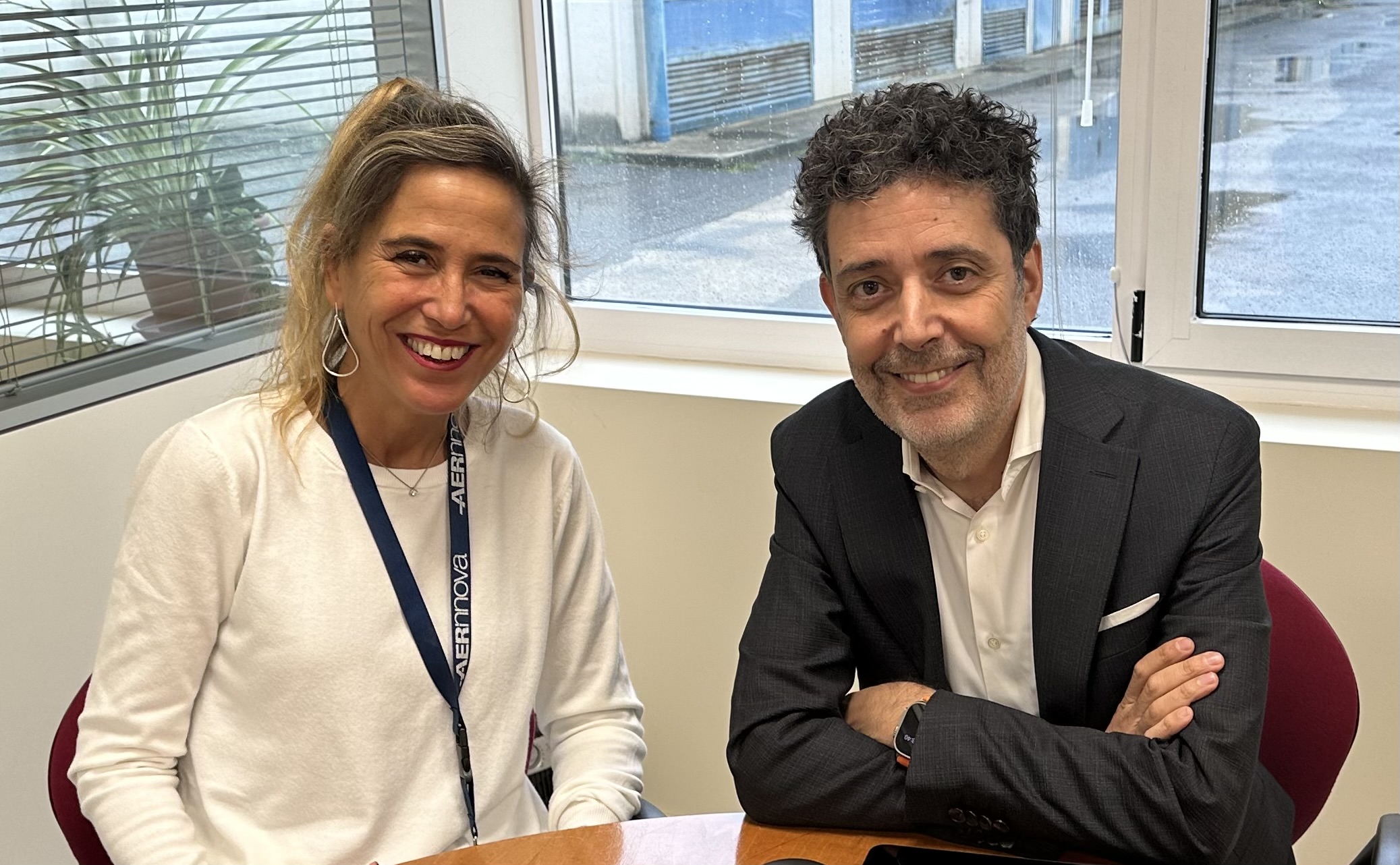We speak to Marta Eguskiza (Aernnova Project Porfolio Manager) and Javier Herrero (VP CMIT) to learn first-hand about the context, vision and details of the group’s digital transformation project, called Zero Latency.
ANN NEWS: Can you tell us about the digital transformation we want to carry out with this project within the Aernnova Group?
Let’s try to explain it with a simile. One of the paradigms that this digital transformation program is trying to establish is the maximum simplification of the flow of materials between the companies of the group, our suppliers and also our customers. One of the ways to achieve this goal is the definition of a unified product structure – BOM or Bill Of Material – with homogeneous code and classification of items across all Group companies.
If we apply this in its organizational aspect, we aim to have a consolidate organizational structure, which contains the level of aptitude and competencies of each employee permanently updated. In the same way that the product structure is key to controlling the flow of materials, the organizational structure is key to controlling the flow of information – according to roles and responsibilities – and its maximum efficiency.
Achieving this objective of controlling and optimizing the flow of information and decision making is based on its immediate reflection in digital tools, and the use of these to automate processes and extend the capabilities of our organization; hence the term “Digital Transformation”.
ANN NEWS: Why is digital transformation necessary in our case?
The technology we have in place in the Group, while it has allowed us to run operations successfully so far, we believe that it does not have the flexibility, usability and connectivity capabilities to enable the Group’s digital transformation going forward.
Zero Latency intends to replace most of the Group’s “core” applications – where business-critical operations are carried out – with a new Cloud-based platform, developed and maintained by a software vendor – Infor – with whom we have established a strategic agreement.
During this project, more than 25 “legacy” applications, most of them technologically outdated and heavily customized (which means hardly upgradable) will be replaced by a group of modern applications, connected to each other and connectable with others, and kept up to date with continuous updates on a monthly basis. We will call this conglomerate of applications the “Digital Operations Platform – DOP”.
ANN NEWS: What advantages/benefits does the digital transformation generate for Aernnova?
Behind the name Zero Latency is the concept of latency, whose definition is the “period of time that elapses between a stimulus and its response”. This concept, widely used in the context of information technologies, causes that in situations of high latency the user experience (“User eXperience” or UX) is greatly degraded, and even makes some applications unusable.
But in the same way that computer latency has consequences in the action / reaction delay, we have equivalents in the physical world. For example:
-From the time an exception occurs and – in the best case – is logged.
-From the time it is recorded until someone becomes involved
-Until it gets to the appropriate person to manage it
-Until it is actually handled
-Until it is finally solved
– … and even until it is marked as resolved, closing the loop.
Applying, therefore, the term on these use cases would be to shorten these times with the will to make them practically instantaneous. In other words, Zero Latency.
In short, Zero Latency aims at what is represented in the following graph:
Imagine that you have a Non Conformity in Mexico that requires a disposition, and you need to involve the MRB team located in Spain. Imagine the process as you know it today, and the application of technologies and – above all – the Zero Latency principle so that this process is carried out in REAL TIME, at the very moment it is required.
This also implies that the same requirement that exists now for not stopping a machine, exists for not stopping a process, and that the indirect labor force is prepared with instant availability, the relevant information, visible to both in the same place and with the precise tools to handle it.
ANN NEWS: There are companies that understand digital transformation as a technological process, an acquisition of the latest equipment and software. Are they right?
As we have said before: we see the road to digital transformation as a process of cultural change in the organization, and where technology is an enabler of the transformation and not an end in itself.
ANN NEWS: Is it possible to grow with speed while transforming digitally?
One of the effects of this digital transformation is that, by redesigning all processes and organizational structures, it will lead to a homogenization of these, which is an enabler of growth capacity. We could say that, without digital transformation, future growth capabilities could be compromised.
Obviously, the work involved in such a task requires a significant involvement of all employees.
To this end, we have tried to select a time when the workload has not yet taken off and there is an opportunity to dedicate valuable organizational resources to collaborate in the design and implementation of the tools to this task in the coming months.






